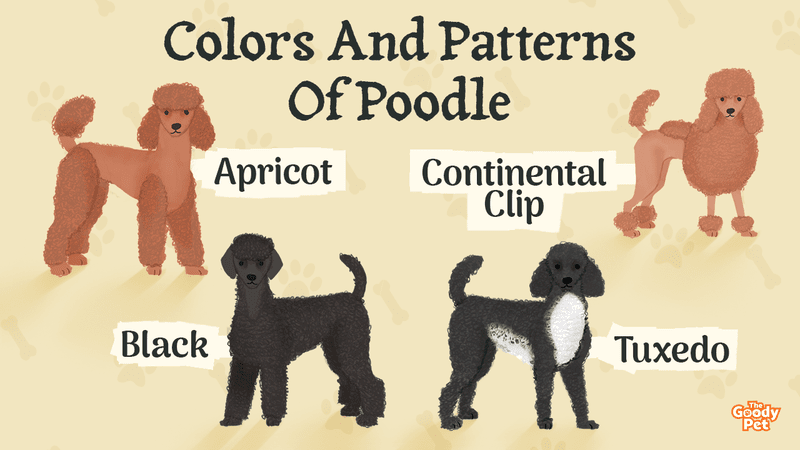When I started taking interest in Poodles, the breed’s wide range of coat types, colors, and patterns sounded like a puzzle. Fast forward and I can now tell any first-time Poodle lover or parent that they are spoilt for options when it comes to choosing a Poodle.
The Poodle’s coat types can range from the official curly to the improper wavy coat. And when it comes to color, Poodles could have a solid color like black or be bicolor like black & white. Poodles also have varied coat patterns ranging from the rare brindle to the more common phantom patterns.
Since we know that the Poodle is one of the most loved and popular furry friends, we wanted to give you a comprehensive list of the Poodle’s 6 coat types, 7 patterns, and 29 coat colors. Read on to savor the details.
42. Pink (Artificial)
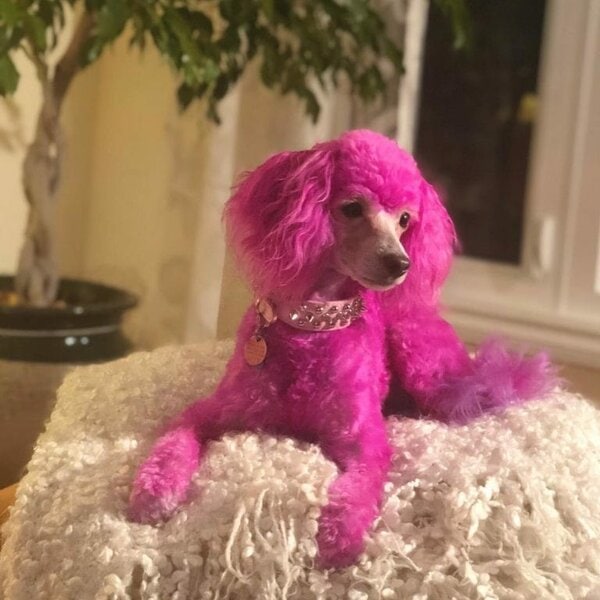
Dog hair dyeing has become a common practice lately despite the controversy of whether it is ethical and healthy for your furry friend or not.
If you spot a pink poodle, you should know that the pick color does not come naturally in poodles. Instead, some owners opt to color their white or light color Poodle with a solid or light pink color all over the body. Others may use a lighter shade on the body against a solid pink shade on the ears and/or feet fur.
41. Silver & White
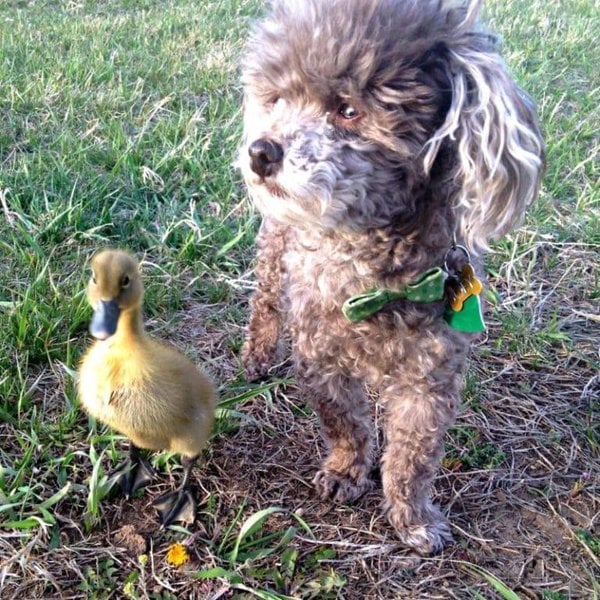
The silver & white Poodle coat mixes white and silver in a varied pattern of either more white or more silver. The white may appear more on the body and the gray on the head, ears, or vice versa. Silver on the ears tends to be darker than on the rest of the body.
Because silver tends towards gray, the combined silver and white colors on the furry coat of a Poodle lose their original sheen to take a dull grayish silver-white.
40. Corded Coat (Dreadlock)
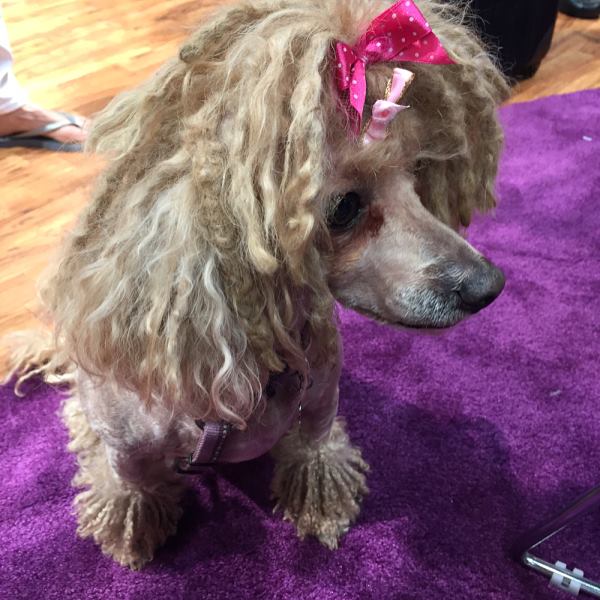
Even though rarely seen, a Poodle’s hair can be allowed to naturally into cord or dreadlocks. Leaving the hair without combing for a couple of weeks will set the pace for the cords. But you’ll have to separate and work the cords so they can form properly, then rework them every number of days to keep them neat.
Unkempt cords can create complex matting and cause damage to your dog’s coat and skin, which could mean pain and discomfort for your pup.
39. Puppy Clip
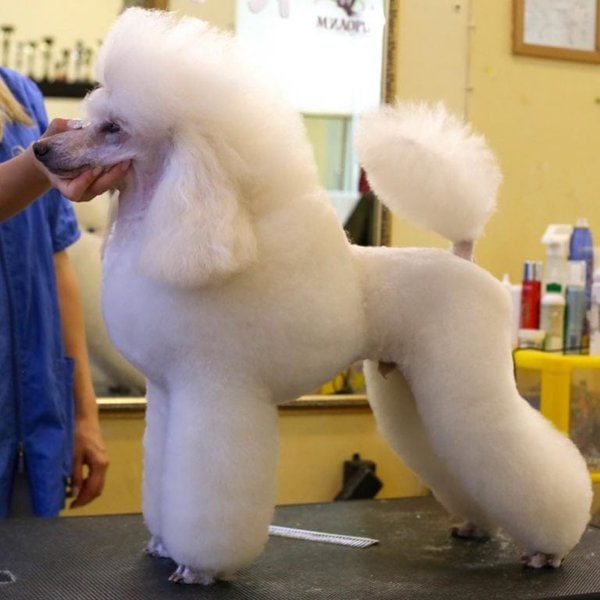
A puppy clip in Poodles is a type of hair styling characterized by a shaven body, face, neck, feet, and the base of the tail. The head and ears are left with longer hair and the tail bears a pompon at the end.
The puppy clip hair type is acknowledged by the ACK as a show hair type for Poodles below the age of one year. It is also a practical hair type for pet Poodles consistently active in the house or the yard.
38. English Saddle Clip
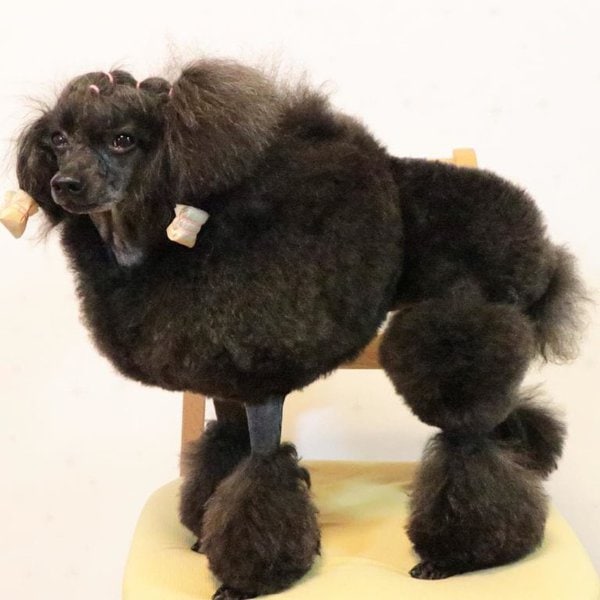
The English Saddle Clip is demonstrated in a shaved face, throat, base of the tail, and the forelegs. The forelegs have puffs and the tail has a pompon at the end.
The Poodle with an English saddle has a blanket of short hair on the hindquarters but for a curve-shaved area on each side.
The hind legs have two shaved bands each with the shaven foot and the area above the puffs is clearly visible. The rest of the body parts have hair that could be clipped to create symmetry.
37. Continental Clip
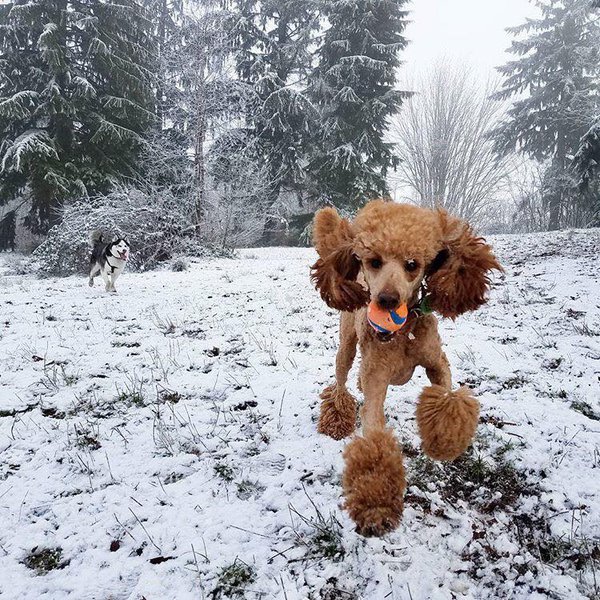
A Poodle with the Continental Clip pattern on the coat has the face, throat, feet, and base of the tail clean-shaven. The forelegs are shaved but with puffs while the hind legs are also shaved and have bracelets. The shaved feet and portions of the legs above the puffs are clearly visible. The tail bears a pompon at the end.
As a difference with the English saddle clip, the Continental clip has more of the rear area shaved and the hair on the head is let loose, unlike the English saddle that has it tied.
36. Full Body
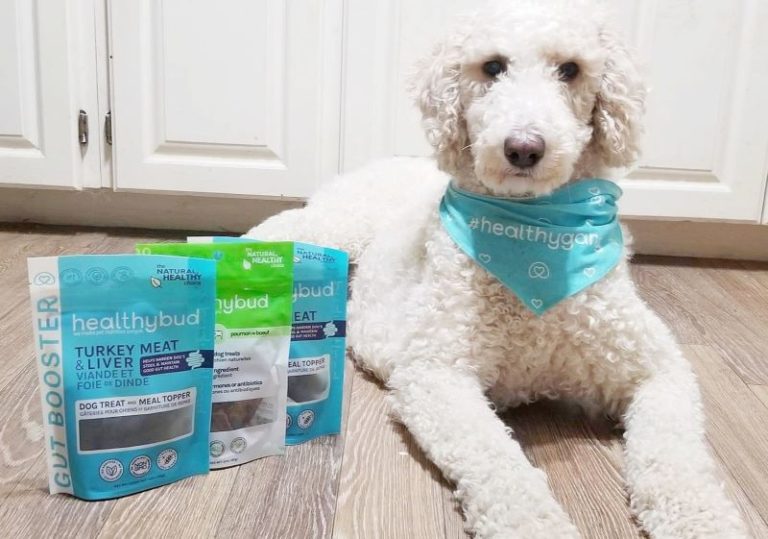
Now for the different markings and patterns of a poodle.
Dogs come in four standard color coats: black, white, brown, and red. All other coats are shades or combinations of these colors. The standard colors are determined by the two basic canine coat pigments: eumelanin (black) and pheaomelanin (red).
Some Poodles have entire coats made of the same color without any markings.
Black, red, and white Poodles will have black eyes, eye rims, noses, and lips while brown Poodles take the liver color on these parts.
35. Parti
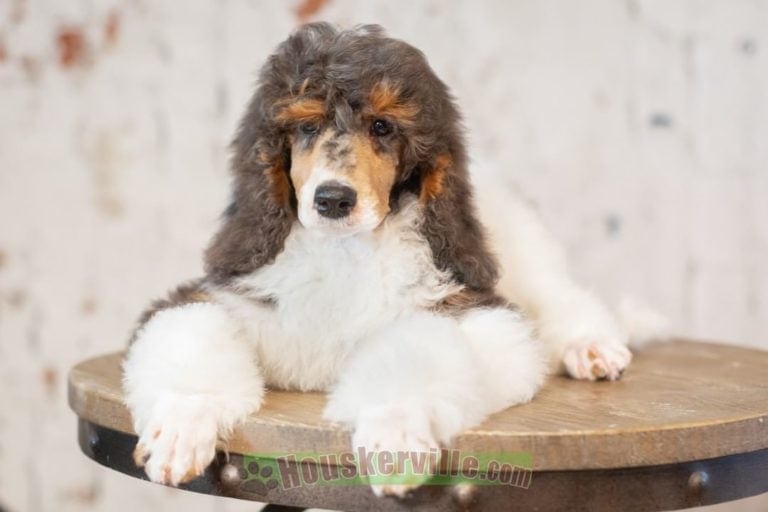
A Parti Poodle has a coat with a majority white color and another color that forms sporadic patterns on the Poodle’s coat, meaning that the second color can be anywhere on the body.
Because of this unpredictability, Parti Poodles are largely diverse and it is difficult to find one that looks like the other, even though they are born of the same parents.
The combination of the two colors in a true Parti Poodle does not cause any to be dull, instead, both colors are clear with well-defined pattern boundaries.
34. Tuxedo
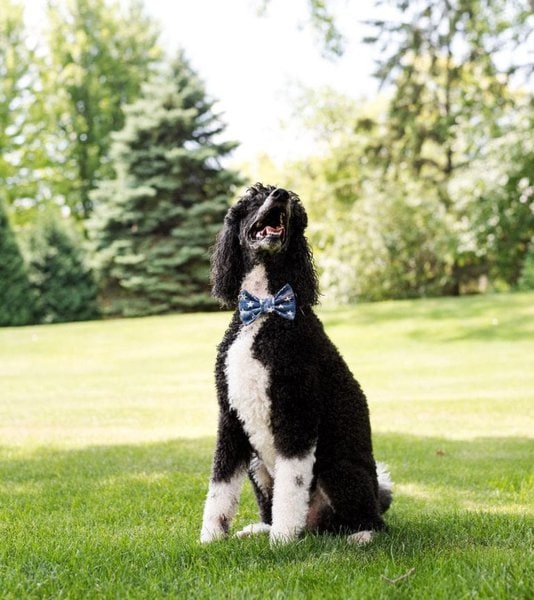
A Tuxedo Poodle has a color pattern that makes it appear as though it were adorning a tuxedo. It is a variation of the parti that is well defined in a tuxedo pattern.
The Poodle with a tuxedo pattern has a light color (white or otherwise) from the throat down the neck, chest, and abdomen, under the tail, and on the lower part of the legs. The darker color (black, red, or otherwise) covers the back and the rest of the body parts to form the tuxedo pattern.
33. Phantom
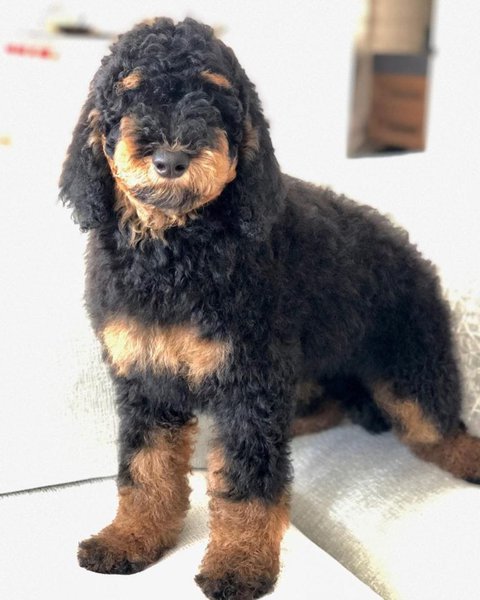
Phantom Poodles are those that have a solid base color with well-defined markings of a second color. The base color could be black, brown, red, apricot, silver, or another color.
The second color, described as the phantom color appears in markings over the eyes, on the muzzle, on the underside of the tail, on the chest and throat, or on the feet.
Phantom markings are different from the regular well-defined pattern of a Parti and are never more than the base color.
32. Merle
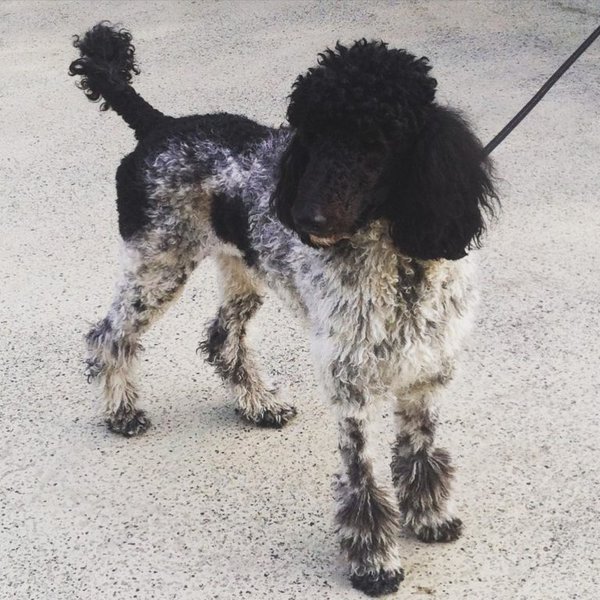
The merle coat in dogs is caused by a partially dominant gene that creates irregular patterns and spots (ticking) of diluted pigmentation on solid black coats.
It is maintained that the merle gene is not original in Poodles but was instead introduced to this breed through crossbreeding. This explains why the merle coat is not an official Poodle coat pattern and does not even feature among the non-official Poodle colors listed on the breed’s AKC page.
31. Brindle
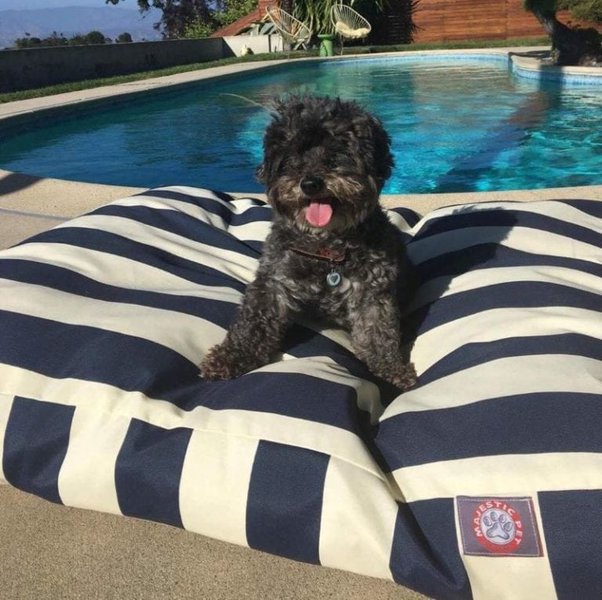
Brindle Poodles inherit one of the recessive alleles of the dominant black (K locus) that creates “tiger striped” patterns on their coat. The background coat color can vary from black to apricot and gray or a variety of other coat colors.
To be brindle, a Poodle must inherit the recessive gene from both parents. Poodles who are carriers of the recessive gene (have the dominant K and the recessive k) will portray the dominant color and not the brindle pattern.
30. Sable
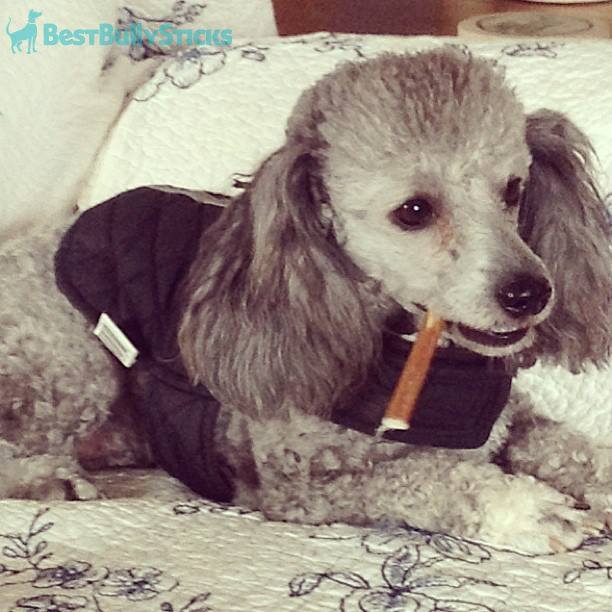
Sable is another non-official Poodle coat pattern that is not recognized by the national kennel clubs.
The Sable coat in dogs is caused by an allele of the agouti gene. It is presented in black-tipped hairs on a tan, yellow, gray, or silver background.
The sable color characterizes the entire dog’s body and is patterned in a way that no area is made up of a single color. The featured poodle has a gray/silver dark sable with a bit of beige on the head.
29. Apricot
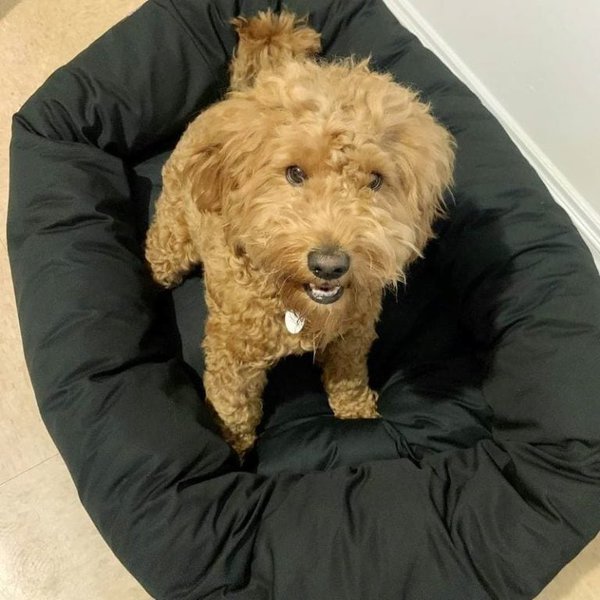
Now for the colors.
Apricot is one of the official colors of the Poodle. It is a dilute red resulting from the fading gene, which explains why apricot Poodles can produce a red.
Apricot can range in shades on a Poodle’s coat, with the light shade tending towards the cream but maintaining a noticeable red tint. True apricots also have black eyes, nose, lips, and eye rims). Some may carry liver spots but this is not preferred by kennel clubs.
28. Black
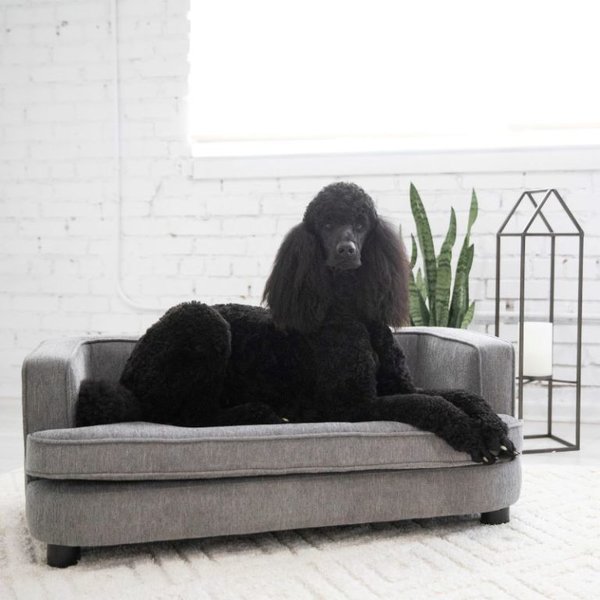
You will tell a true black Poodle from the extreme ink-black color with no traces of white, blue, silver, or any other color. The skin of the face when clean-shaven also has a similar dark color.
A true test for a true black Poodle puppy is that its color never fades with age. Black Poodles also have a black nose, lips, eye rims, and toenails. They also have very dark eyes, though some consider them dark brown.
27. Blue

Another of the dilute black Poodle colors. True blue Poodles are born with a black coat and are often registered as black, but their root hairs may have a mixture of colors, different from true black Poodles.
Within the first year, the black gradually clears to reveal the blue. Unlike gray and silver, the blue in a Poodles has a darker shade. But similar to the silvers and grays, blues may portray shades of varied intensity. All three colors also have black eyes, noses, lips, and eye rims.
26. Gray
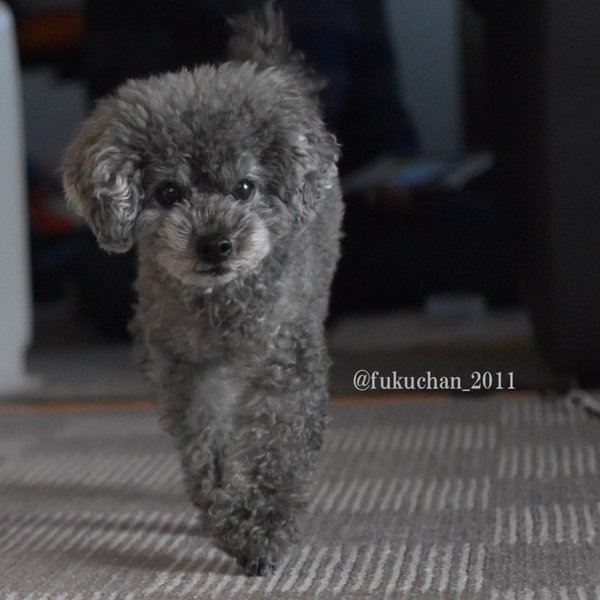
Poodles can be born gray or gradually turn gray as they grow. Poodles that are born gray have the D locus that dilutes black into gray or blue. Poodles that turn gray progressively as they grow have the G locus that dilutes black into gray with age.
Gray may easily be confused with silver, but silver has a sheen that almost suggests a bit of white in the shade while gray is dull and tends towards blue.
25. Silver

Silver is a dilute of the black coat color. That’s why silver puppies are born black and turn silver with time. You’ll notice clear signs of silver by the 6th week, and your pup will be all silver by the time they are 2 years old.
According to the AKC, true silvers have black noses, lips, and eye-rims. Their toenails may be black or self-colored and their eyes extra dark, even though some describe the eyes as dark brown.
24. Silver Beige
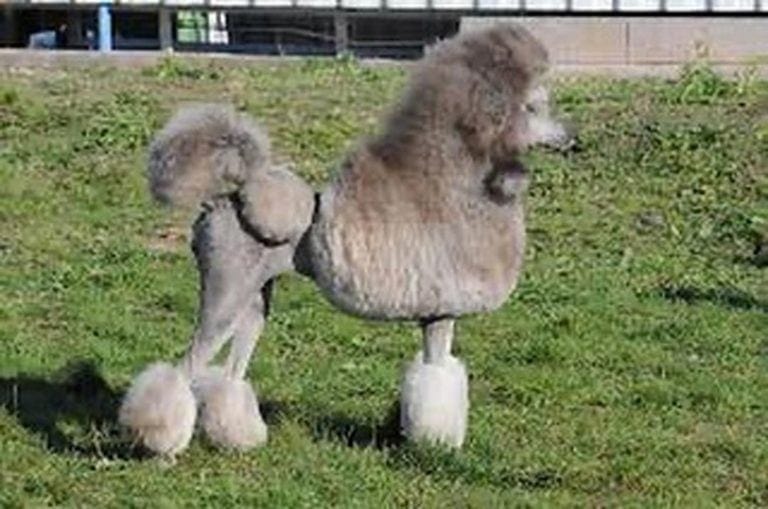
Beige is a pale sandy-fawn color that results from a diluted brown and combines with a light silver to form the silver beige Poodle. A true silver beige Poodle has a brown coat at birth which gradually turns silver beige beginning with the face and feet at around 6 weeks.
Silver beige Poodle coats may vary in shade, with some getting a darker silver on the ears and others acquiring more pronounced sandy brown with the silver.
23. Brown

Brown Poodles have a darker color that stands out as different from the lighter red and Café au Lait. A solid brown in Poodles results from the dominant brown (‘B’) allele in the B locus and not the recessive ‘bb’ which is responsible for diluting black into brown.
Brown Poodles have liver noses, lips, and eye rims thanks to the B dominance which eliminates the possibility of black pigment. Their nails are dark and the eyes bear a dark-amber color.
22. Red

Red is one of the official colors of the Poodle. It comes in varying shades including a close to apricot tint and a rather dark mahogany shade. This extreme color diversity is often said to be caused by the ‘Rufus’ gene.
The original red Poodles resulted from experimental breeding between a standard and a miniature Poodle. True reds have black points, and even though some may have liver points, they are not preferred in the US.
21. Cream
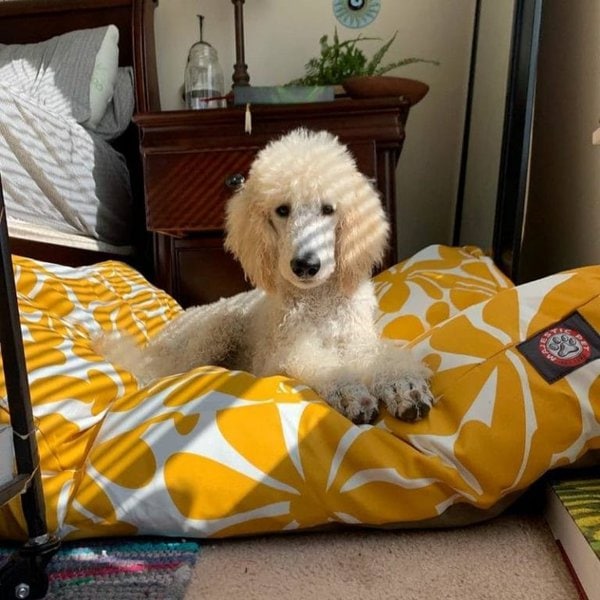
As with cream & white, cream Poodles are often categorized as white. But you’ll notice an extremely faded yellow/apricot in cream Poodles as a difference from white ones.
In dogs, the cream color is often explained by one of two theories:
- A Chinchilla allele (Cc) is part of a contentious C locus that reduces tan, apricot, and yellow to cream.
- A dog is heterozygous for the cream coat color and, therefore, manifests the ‘e’ genotype.
20. White

A white coat in dogs results from the complete absence of pigment cells in both the dog’s skin and hairs. White Poodles have a snow-white sheen. But you’ll often see white & apricot or cream Poodles listed as white.
To make out a white Poodle, notice the extra dark eyes, a black nose and lips as well as the eye rims. The black in these spots is key in differentiating pure whites and albino dogs: whites have color pigmentation on these spots, but albinos lack pigmentation throughout their entire body.
19. Black & Apricot
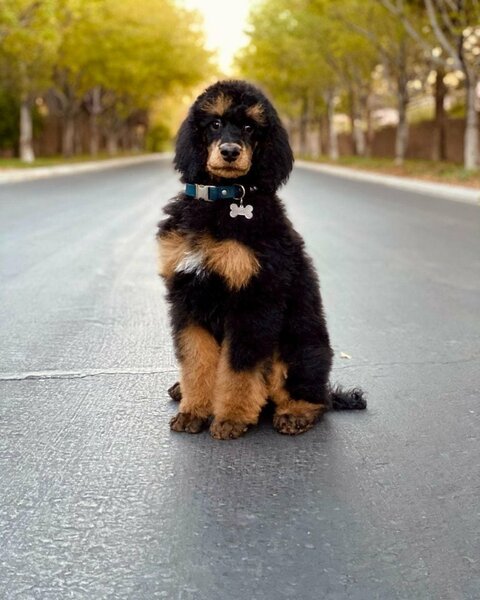
The apricot in a black & apricot Poodle is similar to tan but has a lighter shade depending on how the genes control the intensity of the phaeomelanin pigment. While black is dominant, the apricot is a variation of the red color in the E locus.
Even though the majority black color on a black & apricot Poodle tends to dampen the apricot, you’ll nonetheless, notice the light-yellowish/orange apricot without much effort.
18. Black & Brown
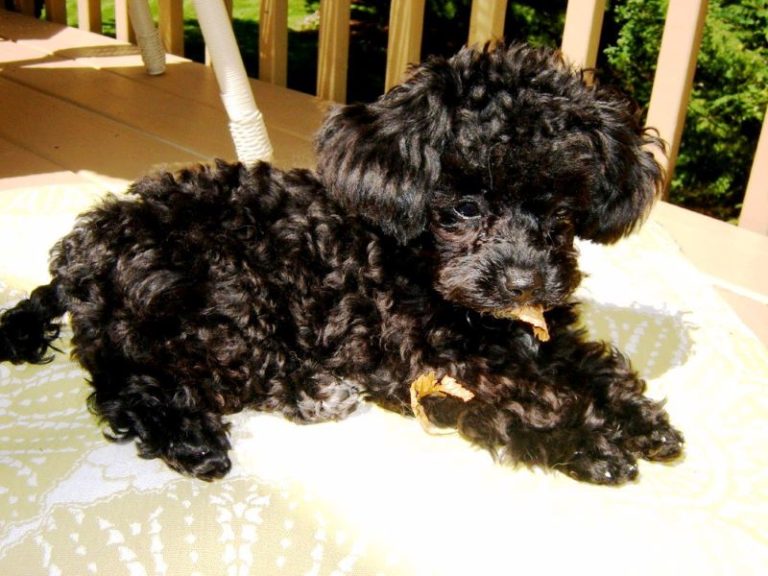
Black and brown are two dull colors together. When the brown is lighter, you’ll easily make out the brown from the black. When the brown is dark, you’ll barely make out the two colors, even though you can easily tell that your poodle is not a solid black all over.
While black is caused by the dominant black gene, brown results from the ‘bb’ recessive allele in the B locus that dilutes black into a brown pigment.
17. Black & Red
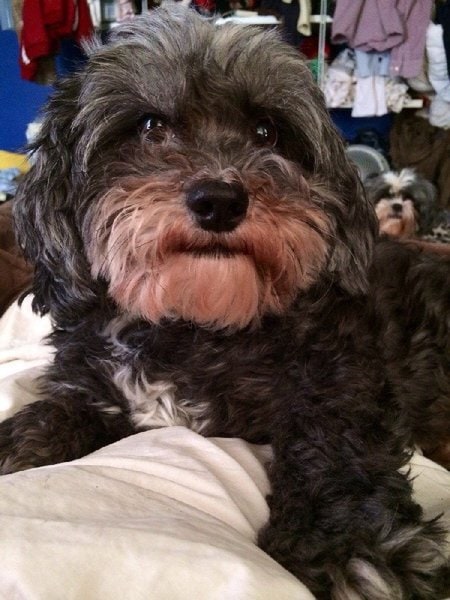
Black and red are the two basic pigments in dog coat color. Their presence on a Poodles coat suggests the interaction between the Eumelanin (black) and the Phaeomelanin (red) pigments.
The presence of black and red on a Poodle comes with breeding a parent with the dominant black gene and one with the E (extension) locus for red coats.
Black & red can be easily confused with black & apricot. Notice the darker red as a difference from a lighter apricot.
16. Black & Cream
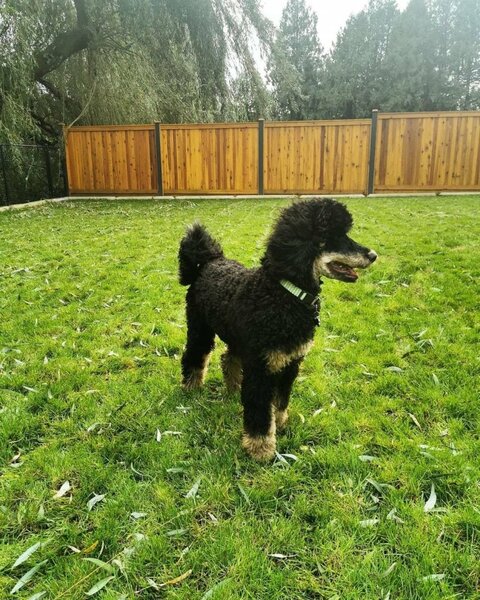
A black coat in dogs is always the action of the K (dominant black) locus. When a Poodle is black with cream markings, the dilution gene acts on the phaeomelanin (red pigment) causing extreme dilution of the red that is close to the absence of pigment, as is the case of white.
Between black & cream and black & white, you’ll notice the completely snow-white color in the latter and a kind of ‘dirty white’ in black & cream Poodles. Also, the cream is different from the darker tan that results from a milder dilution of red pigment.
15. Black & Tan
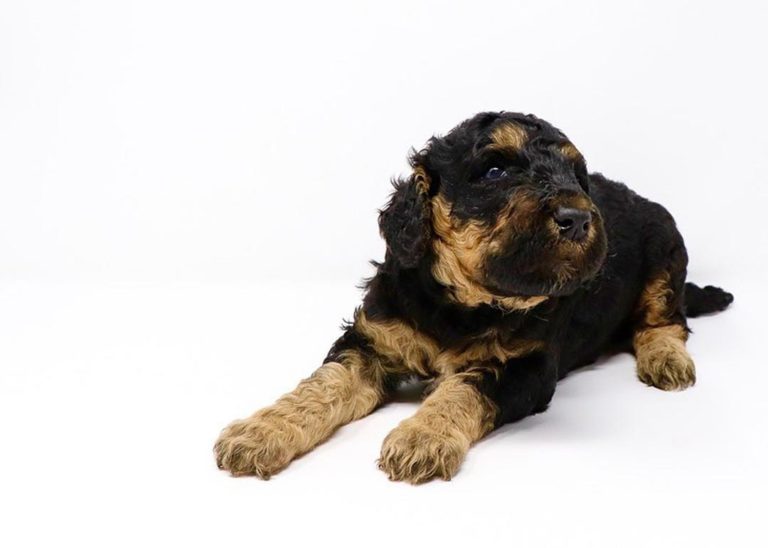
From a visual point of view, tan is a pale shade of brown color. From a gene perspective, the tan color on dog coats happens when the ‘bb’ recessive brown dilutes the black color to a lighter tan intensity.
When mixed with black, the dominant black in the K locus is active on the black parts while the dilution gene causes the tan markings. Compared to the cream & black, the tan has a darker shade plus cream is a dilution of the red (not brown).
14. Black & White
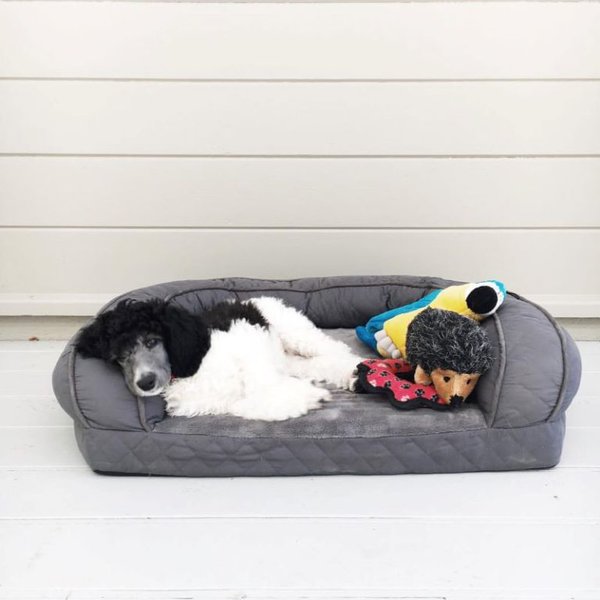
A Black & White Poodle has a majority black color with white markings on its coat. While black is caused by the dominant black gene, the white comes as a result of the complete absence of pigment cells in the areas that cause these markings.
Black & White Poodles have a striking look because the black & white colors retain their original sheen and are clearly portioned on the Poodle’s coat. The white marks can occur anywhere on your Poodles body.
13. Black & Gray
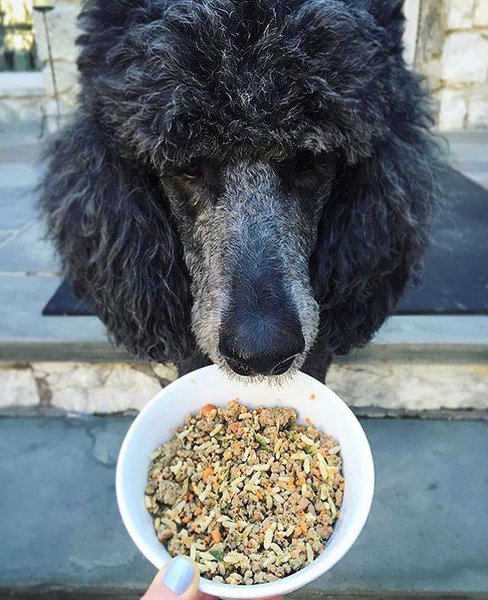
Black & gray poodles are rare and are not among the most desired due to their dull colors. Both the black and gray may vary in intensity, even though the black will not give an indication that it is another color.
The gray patterns on a black and gray Poodle result from a dilution of the black and will vary in intensity depending on how much dilution happens. Compared to the black & silver, the gray is duller.
12. Black & Silver
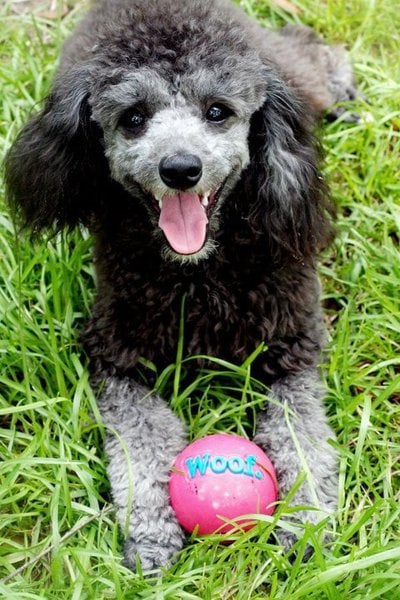
As with black & gray, silver is a dilution of the black color. Compared to gray which tends more towards blue, silver has a brighter sheen, almost suggesting a bit of white in it.
Black & silver Poodles may have a varied shade of silver with the area around the ears tending to be darker than other areas on the body. Black & Silver Poodles are also a rare combination, just like the black & gray.
11. Blue & White
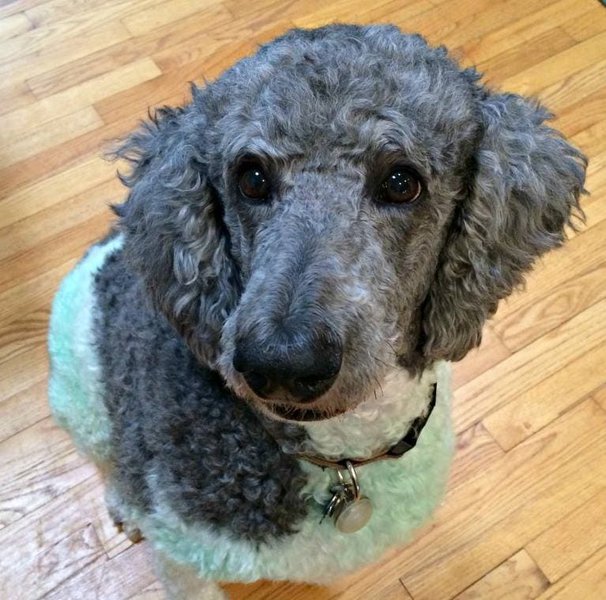
Blue is a Poodle color that results from the dilution of black. This happens with age considering that all blue Poodles are born black.
When combined with white, the markings with the white color are on the parts of your Poodle’s coat where the pigment cells are completely lacking in action.
So, while your blue & white Poodle will seem black and white at birth, the black will gradually turn to blue to reveal your blue & white furry friend.
10. Brown & Apricot
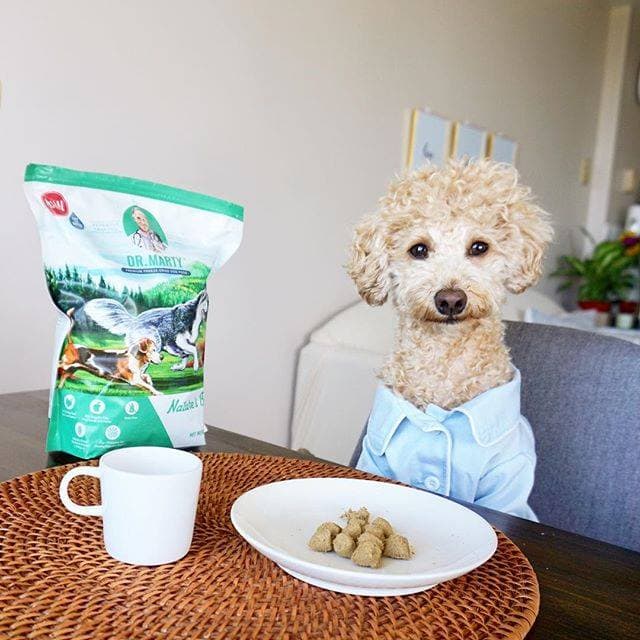
Another rare combination of colors on a Poodle’s coat. While brown results from the recessive ‘bb’ gene that rules out the possibility of the black color, apricot is a dilution of the red that is caused by the recessive ‘e’. This allele carries the MC1R mutation gene which works to darken or lighten the red, causing the apricot shade.
To differentiate the red & apricot from the brown & apricot, notice the darker parts of brown in the brown & apricot Poodle that are different from the lighter red.
9. Brown & White
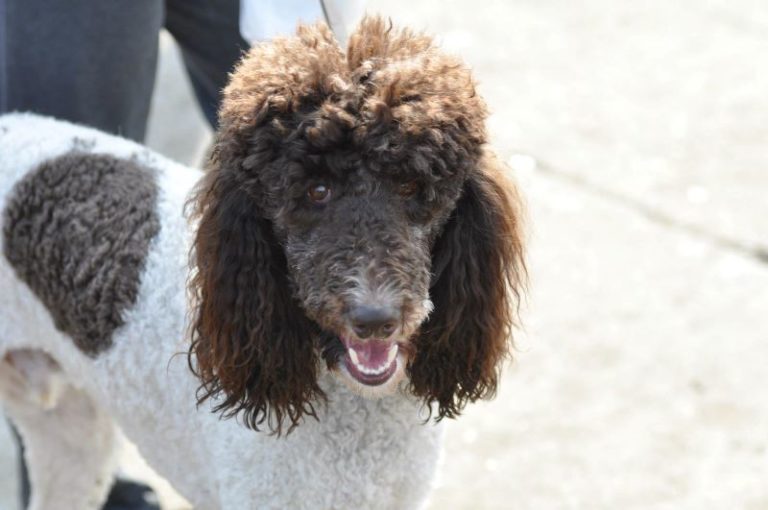
Brown in bicolor dog coats results from the recessive ‘bb’ gene which rules out the possibility of a black coat.
When brown is combined with white, it is thanks to the interaction of genes that cause the dilution of the phaeomelanin pigment which is responsible for the brown, red, and apricot colors. The diluted parts become white due to the absence of pigment while the parts where the brown gene is present remain brown.
8. Café au Lait
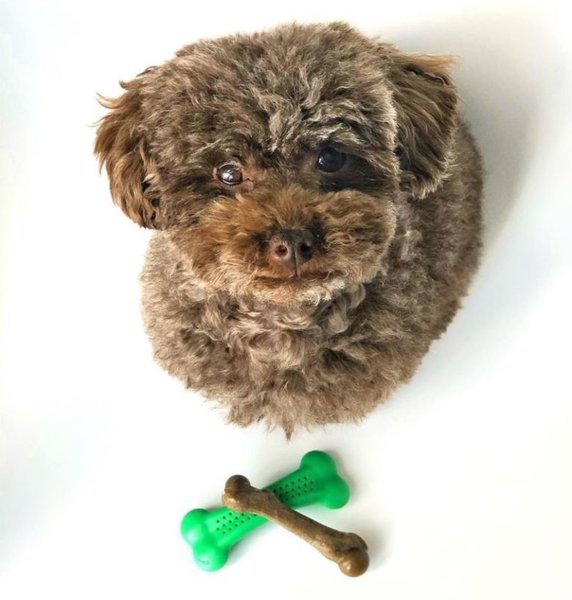
The Café au Lait Poodle adorns a dilute brown coat color because of the fading gene. It’s possible to confuse this coat color with silver beige, but you should imagine your coffee with cream to get a clear idea of how a Poodle of this color looks like.
Café au Lait Poodles could be born brown (not beige) and gradually turn to café by the second year. They also have dark-amber eyes while their noses, eye rims, and lips have the liver color.
7. Cream & White
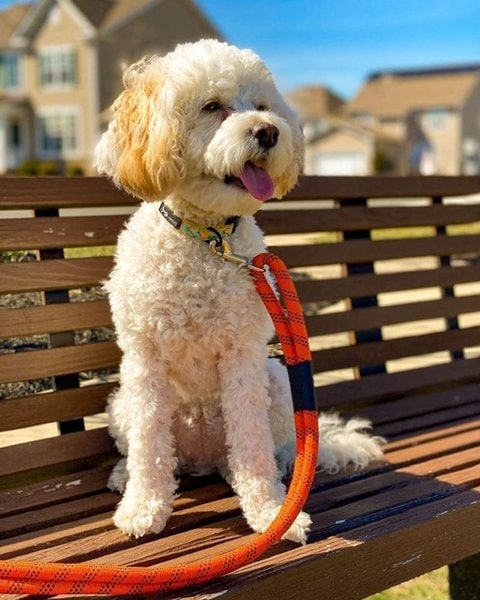
Cream & white is a tricky color in Poodles, often categorized as either white or apricot. But this coat color usually presents a majority white with shades of cream on parts of your puppy’s body.
A cream & white coat in a Poodle can be explained by the interaction between genes that cause an absence of color pigmentation and the ‘Cc’ or ‘e’ which are said to cause discoloration on tan, yellow, or apricot to cause a cream color.
6. Red & Apricot
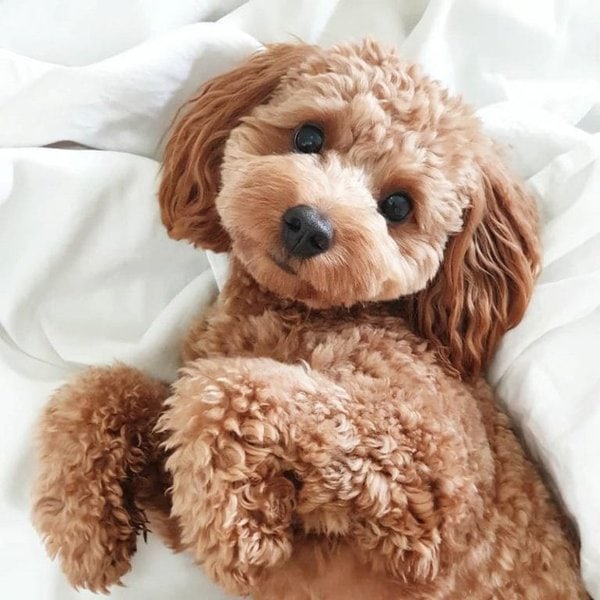
The red & apricot combination is rare in Poodles. But when it comes by, your furry friend will have a coat with areas of a darker red and some with a lighter apricot.
Color shades in the red and apricot coats are explained by the working of the E locus gene (MC1R) also known as the extension gene. While the dominant E carries the black pigment, the recessive ‘e’ carries two pairs of the MC1R mutation which works to darken or lighten the red to create shades of red and yellow/apricot.
5. Red & White
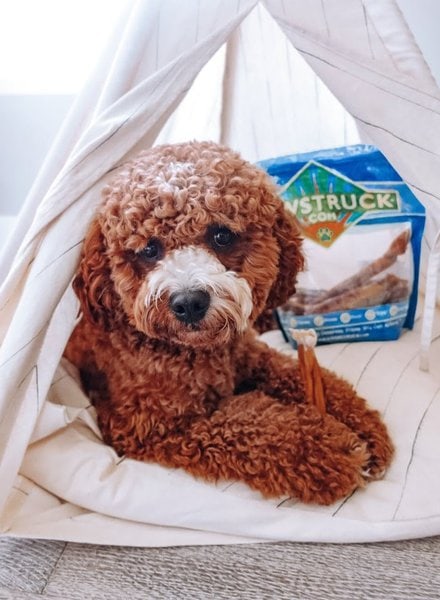
As with apricot & white, red & white Poodles also have a bright look. Red is darker than apricot, which makes the white maintain its original sheen and the red also appears brighter alongside the white.
But the red (as all other colors) can also vary in intensity against the white depending on how the genes responsible for coat color manipulate these the two basic coat pigments, Eumelanin for black and Phaeomelanin responsible for the red and the gold and yellow variations.
4. Apricot & White
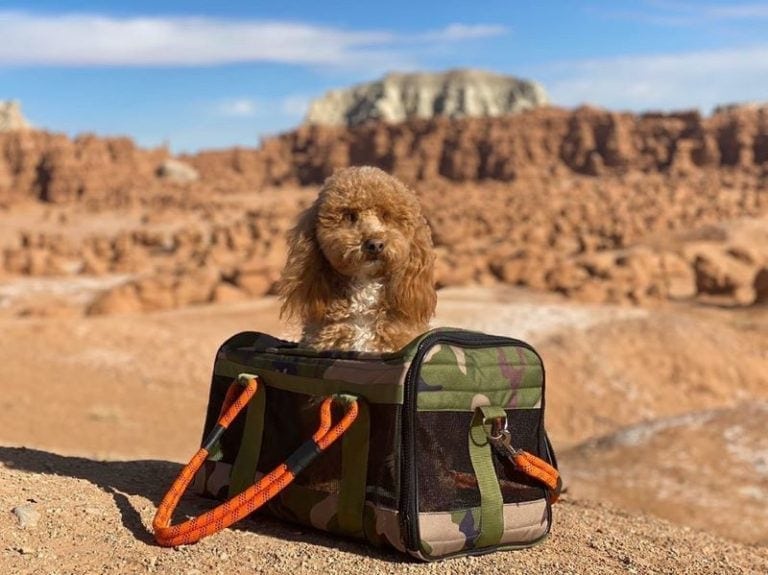
Apricot & white Poodles are among the brightly colored dogs of the breed. The combination of the two colors on the Poodle’s skin can take different shades, varying from a mixture of more apricot with white patches to a majority white with shades of lighter or darker apricot.
Variation in intensity of the shade in apricot & white poodles is determined by the apricot. Unlike with darker colors, the white combined with apricot remains bright, which gives your furry friend a cheerful look.
3. Gray & White
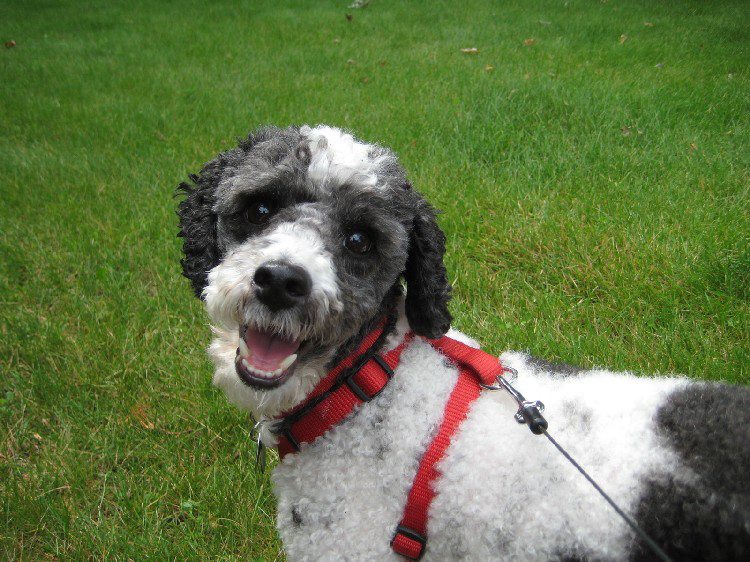
Just like with silver & white, gray & white on a Poodle could vary from having more white or more gray. The gray creates a dull look on the white different from the sheen that comes with an all-white Poodle. But that does not kill the beauty of a gray and white Poodle, just as with other multicolor coats.
If the silver-white and the gray-white Poodle colors confuse you, note the duller gray that tends towards black.
2. Improper Coat (Wavy)
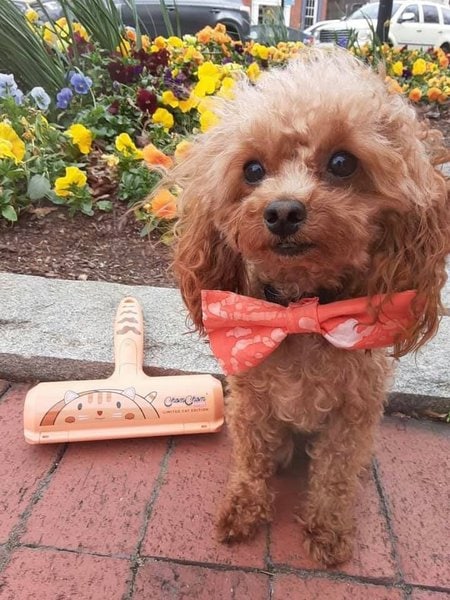
The wavy Poodle coat also described as an improper coat is a breeding hitch associated with poor selection during breeding.
An improper Poodle coat appears like an untidy curl with soft waves in patches or throughout the entire body.
Even though improper Poodle coats are easier to brush and will not mat as easily as the curly coat, from a breed standard point of view, they are an unacceptable fault and not allowed on the show ring.
1. Curly Coat
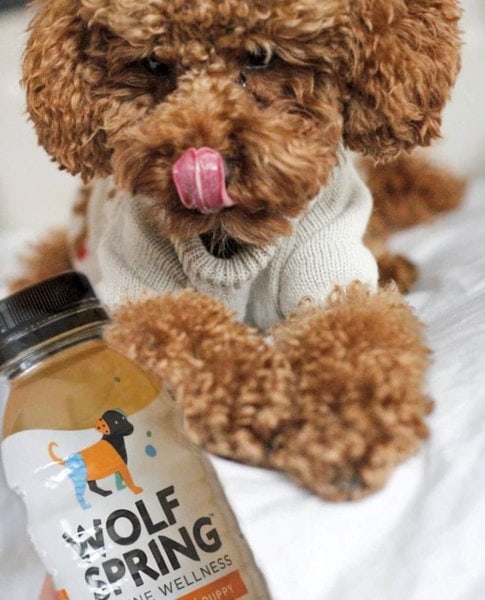
The curly coat is the officially acceptable coat standard of the Poodle by the AKC. It should be dense throughout the Poodle’s body and be of “naturally harsh texture.
Curly coats with cords hanging tightly and evenly are permitted. The cords appear shorter on the bracelets, legs, pompons, and tail puff but are longer on the head, ears, and the rest of the body.
The curly Poodle coat requires daily brushing down to the roots. Otherwise, heavy matting will force you to shave off your Poodle’s fur.
Related Questions
What Is The Most Popular Poodle Color? Of the four standard colors, black and white Poodles are the most popular. This means that you’ll readily find the pitch-black and the snow-white Poodle but you’ll have a harder time finding the striking red and brown colors. The varying shades of all these colors are also rarer than the common black and white.
What Color Poodle Is The Smartest? Overall, the Poodle is listed second in the list of “the intelligence of dogs.” Even though the general approach is that color has nothing to do with a dog’s intelligence, there’s a widespread belief that black and white Poodles are the smartest. But that is yet to be given scientific evidence.
Will Apricot Poodle Turn White? An apricot Poodle can never turn white because the white color on a dog’s coat is an indication of the complete absence of pigment cells. Instead, apricots are a lighter shade of the standard red color. The color intensity is determined by gene control on the pheomelanin pigment responsible for the red color.

